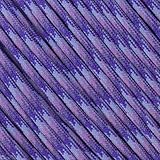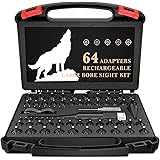Navigating the challenges of external wound care, particularly in situations where conventional medical supplies may be scarce, necessitates an understanding of natural alternatives. While modern medicine offers advanced solutions for cuts, scrapes, and abrasions, historical practices and botanical knowledge provide valuable insights. The video above effectively demonstrates a practical method for creating an usnea poultice, a natural approach to promote healing and deter infection.
This article aims to further elaborate on the principles presented in the video, providing a comprehensive guide to understanding usnea’s medicinal properties and its application in natural wound care. Essential techniques for preparing and applying this herbal remedy are meticulously detailed, ensuring that foundational knowledge for managing external injuries with natural resources is thoroughly conveyed.
Understanding Usnea’s Medicinal Properties for Natural Wound Care
Usnea, often recognized as “Old Man’s Beard,” is a unique lichen that thrives on tree bark across various climates. This symbiotic organism, a combination of algae and fungus, has been valued in traditional medicine for its distinctive antimicrobial capabilities. Its medicinal efficacy is largely attributed to usnic acid, a potent compound with demonstrated antibacterial and antifungal properties.
Consequently, usnea has been historically employed for its ability to combat a wide spectrum of pathogens, making it a crucial component in natural medicine for topical applications. The presence of usnic acid renders usnea particularly effective in the prevention and management of wound infections, a critical concern when addressing external injuries without immediate access to pharmaceutical antibiotics.
Essential Steps for Preparing an Usnea Poultice
The creation of an effective usnea poultice is a straightforward process, demanding careful attention to cleanliness and proper preparation. As shown in the accompanying video, the primary objective is to extract the beneficial compounds from the lichen while maintaining its structural integrity for application.
Gathering and Preparing the Usnea
Prior to preparation, a sufficient quantity of usnea must be responsibly harvested; only healthy, fresh specimens are typically selected. The collected lichen should then be gently cleaned to remove any loose debris, such as dirt or small insects, without washing away its active surface compounds.
Furthermore, a form of water is required to initiate the poultice formation. Clean, potable water is always recommended to avoid introducing new contaminants to the wound site. The usnea is subsequently submerged in this water, allowing it to soften and become pliable, which facilitates the release of its medicinal properties.
Forming and Applying the Poultice
Once the usnea has absorbed adequate moisture, it is carefully removed from the water, ensuring that its original form is largely maintained. The goal is for the lichen to be moist but not dripping excessively, thereby concentrating its active constituents.
A clean cloth or bandana is then prepared to serve as a barrier and a carrier for the usnea. The moistened usnea is strategically placed onto the cloth, with particular attention given to creating a layer that will directly contact the wound. This arrangement minimizes the risk of introducing small particulates of usnea directly into the open wound, which could potentially cause irritation.
Applying and Securing the Usnea Poultice for Infection Prevention
The correct application and securement of the usnea poultice are paramount for its effectiveness in natural wound care. Once the poultice has been assembled, careful placement upon the wound is required to maximize its therapeutic potential and protect the injury.
Precise Placement on the Wound
Upon placement, the side of the cloth containing the majority of the moistened usnea should be positioned directly over the cut, scrape, or abrasion. This ensures that the wound is exposed to the highest concentration of usnic acid and other beneficial compounds. The moisture from the poultice is thus able to penetrate the wound, initiating the healing process and actively working to prevent bacterial or fungal proliferation.
Securing the Poultice and Monitoring the Wound
Following correct placement, the poultice is securely wrapped and tied, often with a knot positioned directly over the wound. This technique applies gentle pressure, which aids in the penetration of the medicinal compounds and keeps the poultice firmly in place. Proper securing also serves as a physical barrier, preventing external contaminants and particulates from entering the wound.
During the period of poultice application, the wound should be regularly monitored for signs of infection or adverse reactions. While usnea is known for its antimicrobial properties, vigilance is always advised when utilizing natural medicine. The poultice typically requires changing periodically, often every few hours or daily, to maintain hygiene and effectiveness.
Foundational Principles of Wound Cleaning and Hygiene
Irrespective of whether natural or conventional remedies are employed, fundamental principles of wound cleaning and hygiene must always be observed. The initial cleansing of an external wound is critical for mitigating the risk of infection and promoting optimal healing.
Initial Wound Assessment and Cleansing
Before any treatment, the wound should be thoroughly assessed for severity, depth, and the presence of foreign bodies. Subsequently, the area surrounding the wound must be meticulously cleaned with clean water and, if available, a mild soap. This process removes surface dirt and bacteria that could otherwise be driven into the wound during subsequent steps.
Furthermore, the wound itself should be gently irrigated with clean water to flush out any debris or contaminants. This step is indispensable; a clean wound bed significantly enhances the efficacy of any applied treatment, including a natural usnea poultice. Sterile saline solution can be used if accessible, offering an even more effective cleansing agent.
Maintaining Sterility and Protection
After initial cleansing, strict attention must be paid to maintaining a sterile environment around the wound. Any materials coming into contact with the wound, such as cloths, bandages, or the usnea itself, should be as clean as possible. In a survival context, this might involve boiling water for cleaning or sterilizing cloth by heat.
The application of a poultice, as demonstrated for usnea wound care, serves a dual purpose: it delivers the medicinal compounds and acts as a protective dressing. This barrier is essential for shielding the wound from further contamination, especially in challenging outdoor environments where exposure to dirt, dust, and microorganisms is prevalent.











